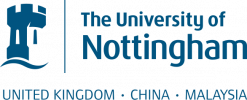© Pint of Science, 2025. All rights reserved.
Join us for a fascinating look at how physics can be used to combat issues affecting health today. Learn about how MRI can be used to better understand disease, how lasers can manipulate miniscule objects and how light and electron microscopy can be used to study the structure and function of cells. There will be a chance to look down our microscopes at a collection of slides yourself!
From Star Trek to medical imaging – the physics of MRI
Prof Penny Gowland
(Professor of Physics)
MRI is a highly versatile non-invasive medical imaging technique. It’s commonly thought of as a method of detecting anatomical abnormalities in radiological diagnosis. However, it’s also a fantastic technique for studying dynamic changes in physiology and metabolism in both health and disease. MRI is very useful for experimental medicine studies, aiming to better understand and characterize disease and to investigate the mechanisms of different treatments. This talk will explain briefly how MRI works and explain how it can be used across of range of conditions from neurology to obstetrics.
Optical trapping – using the force
Dr. Amanda Wright
(Associate Professor)
In the late 1970s a scientist called Arthur Ashkin working at Bell laboratories in America demonstrated that a beam of light could exert a force. We now know that a tightly focused laser beam can generate a force on the pico-Newton scale capable of holding and manipulating individual cells. This technique is known as optical trapping or laser tweezers and has proven to be an immensely powerful tool in biology, used to understanding processes that happen on the micron-scale.
Microscopy: Dashboard and Headlamps—Structure and function
Dashboard and Headlamps: Both lights so not much difference. Yet swap them to drive at night there would be issues. The road would be dark, and you would be blinded! So not much difference matters. Once we know what our biology contains there are two problems: Where what is and what the what it is doing—Structure and Function.
A toy microscope can magnify a moving sample >400x. But how do we use them? What can they see? Is what they see true? Can we use the word ‘see’? I will go through these issues for light and electron microscopy and how we can combine them to get Structure and Function.
A toy microscope can magnify a moving sample >400x. But how do we use them? What can they see? Is what they see true? Can we use the word ‘see’? I will go through these issues for light and electron microscopy and how we can combine them to get Structure and Function.
Map data © OpenStreetMap contributors.

